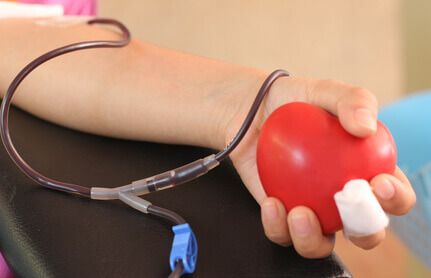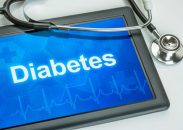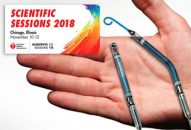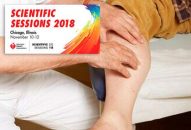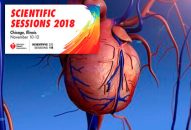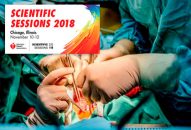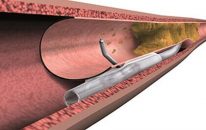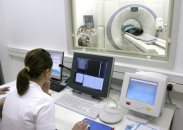A worldwide survey shows there is much room for improvement as regards transradial access procedures, particularly for the prevention of radial artery occlusion post-procedure. While in many places this has been a standard technique for some time now, other places are yet to evolve, and that is the result of this survey. In the past…
Can We Discontinue Betablockers after AMI?
Betablockers (BB) were the first drugs shown to effectively reduce events after acute MI. However, reperfusion and other secondary prevention drugs that came along after that have cast a shadow on betablockers’ original benefit. This study looked at betablocker discontinuation after acute MI in patients with no cardiac failure optimally treated with all recommended medication.…
Coronary Disease in Diabetes: Diabetic Patients Have Much Greater Plaque Progression
Patients with diabetes mellitus experience significantly greater plaque progression, particularly regarding adverse plaque. Male sex and baseline plaque volume >75% were identified as independent risk factors for plaque progression; the latter actually tripled the risk. This study with tomographic follow-up sought to determine the rate and extent of plaque progression, changes in plaque features, and…
AHA 2018 | New-Generation DES Are Similar to Second-Generation DES Beyond Polymer
Sirolimus-eluting stents with biodegradable polymer did not offer better outcomes compared with instant-classic (and undoubtedly valid) everolimus-eluting stents with durable polymer such as Xience. New-generation drug-eluting stents (DES) offer better outcomes than first-generation devices after a 10-year follow-up, according to the ISAR-TEST 4 trial presented at the American Heart Association (AHA) Congress Scientific Sessions and published…
AHA 2018 | More Evidence for the Impella Device, But Larger Trials Are Necessary
In this pilot study, unloading the left ventricle with the Impella CP circulatory support device and delaying angioplasty by about 30 minutes appeared to be feasible and safe in patients with acute myocardial infarction without cardiogenic shock. This work sought to test the hypothesis that the device reduces ischemia-reperfusion injury. The trial included 50 patients who had the…
AHA 2018 | Endoscopic Saphenous-Vein-Graft Harvesting in Patients Undergoing Myocardial Revascularization Surgery
For patients undergoing myocardial revascularization surgery, endoscopic harvesting of saphenous veins in expert hands is similar to traditional methods in terms of events, according to this study presented at the American Heart Association (AHA) Congress and published simultaneously in the New England Journal of Medicine (NEJM). This study, called REGROUP, was able to demonstrate that…
AHA 2018 | New Physical Activity Guidelines Recommend Movement for All Ages
The new 2018 physical activity guidelines continue to recommend the same amount of physical activity (300 minutes of moderate-intensity physical activity per week or 150 minutes of vigorous-intensity physical activity), but they have changed which adults can carry out this moderate- and vigorous-intensity physical activity. Additionally, instead of recommending a target number of minutes of exercise per…
AHA 2018 | Use of Balloon Counterpulsation According to IABP-SHOCK II Trial
Following up on the 30 day and one year effect, the IABP-SHOCK II trial long term outcomes showed there is not benefit to the use of intraaortic balloon counterpulsation in cardiogenic shock patients undergoing acute myocardial infarction. The only work in this group of patients with long term follow up is the SHOCK trial published in…
AHA 2018 | Freedom Long-Term Follow-up: Still in Favor of CABG
Nearly 8 years later, CABG maintains its benefit over PCI-DES in terms of mortality in diabetic patients with multivessel disease, according to the Freedom trial, presented by Dr. Fuster at AHA and simultaneously published in JACC. CABG is superior to PCI-DES, with 36% higher mortality in these last years. Considering the nature of atherosclerosis,…
Clinical Improvement Without Ventricular Function Improvement After CTO
The benefits offered to patients by attempting the rechanneling of a chronic total occlusion are still unclear. Additionally, sometimes the procedural risks are somewhat undetermined. Taking into account these controversies, this work sought to prove whether successful rechanneling of a chronic total occlusion improves ventricular function. This is not a soft endpoint; it has been…
Clinical Utility of CT-Derived FFR for Decision-Making
In this large international multicenter population, computed-tomography (CT)-derived fractional flow reserve (FFR) modified treatment recommendation in two-thirds of subjects compared with CT angiography alone, and it was associated with less negative invasive angiographies. It also predicted revascularization and identified low-risk patients. A non-invasive means to know the anatomy and function of patients with stable chronic…
